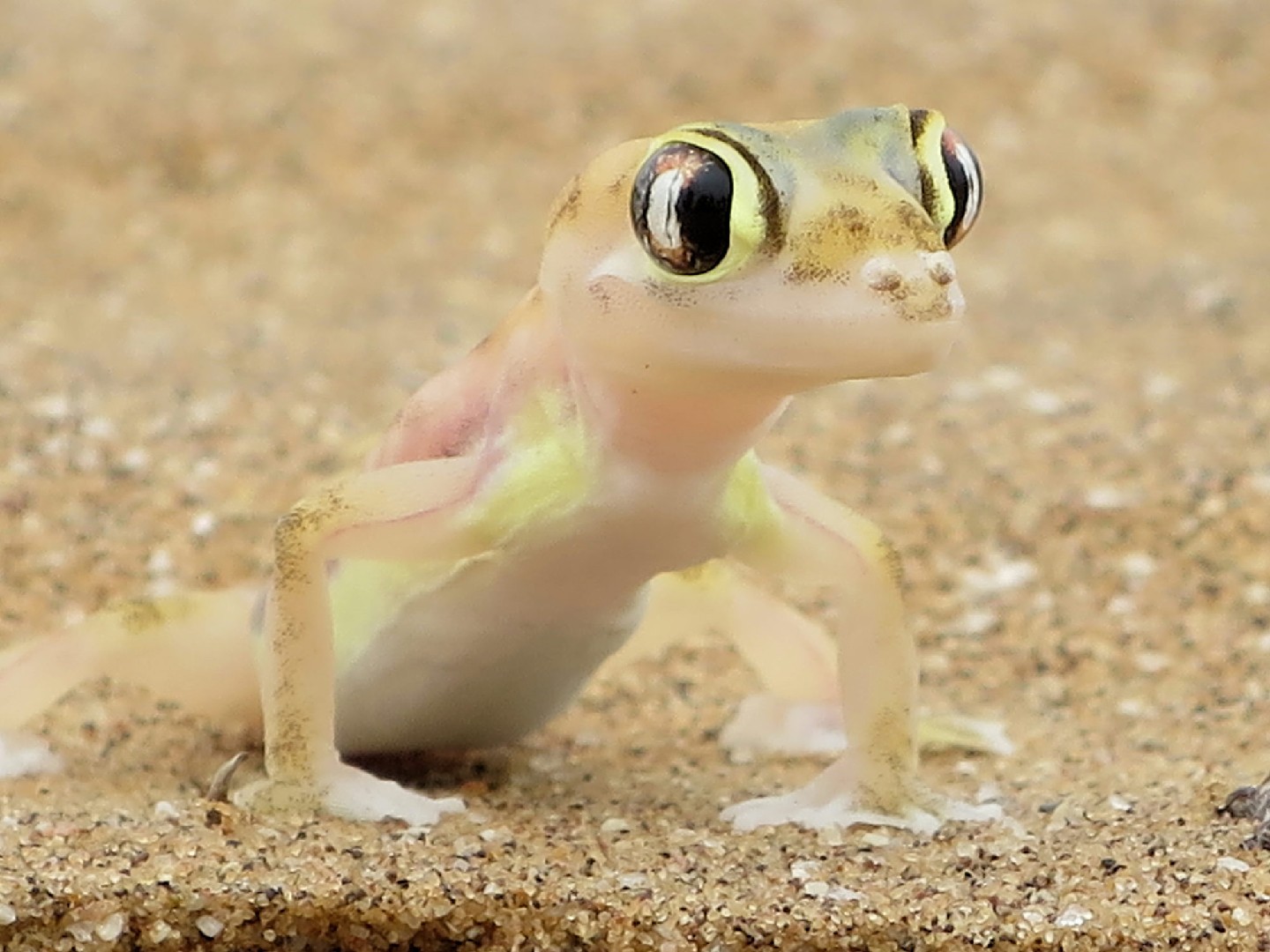Namib sand gecko
A species of Thick-toed geckos Scientific name : Pachydactylus rangei Genus : Thick-toed geckos
Namib sand gecko, A species of Thick-toed geckos
Scientific name: Pachydactylus rangei
Genus: Thick-toed geckos
Content
Description General Info
 Photo By Lutz Worch , used under CC-BY-4.0 /Cropped and compressed from original
Photo By Lutz Worch , used under CC-BY-4.0 /Cropped and compressed from original Description
The namib sand gecko is a medium-sized and very slender gecko endemic to the Namibia desert. Its body is covered with almost translucent scales and some of its internal organs can be seen through its skin. It’s a nocturnal species that spends most of its time buried in the sand. The species is threatened by humans who destroy their habitats and hunt geckos for the pet trade. 
General Info
Lifespan
8-12 years
Diet
Namib sand gecko's dietary habits mainly revolve around nocturnally feeding on ants and small insects. Rich in protein, these miniature arthropods provide the necessary nutrients that support namib sand gecko's growth and metabolism.
Appearance
Namib sand gecko is a medium-sized gecko with a robust body and velvety, heavily pigmented skin. Its striking blue-grey coloration is complemented by bands of white spots, creating a striking contrast. It possesses a triangular shaped head, thick tail, and pronounced digit pads. There are no notable differences in appearance due to age, gender, or subspecies.
Behavior
Namib sand gecko is a nocturnal gecko, skilled in utilizing vertical surfaces in its arid habitat for foraging and evasion. Solitary by nature, it deploys a unique combination of high speed and body flattening as a defensive mechanism. It primarily feeds on invertebrates, carefully using its specialized adhesive toes to negotiate prey capture.
Population
Stable
Scientific Classification
Phylum
Chordates Class
Reptiles Order
Lizards and snakes Family
Common geckos Genus
Thick-toed geckos Species
Namib sand gecko